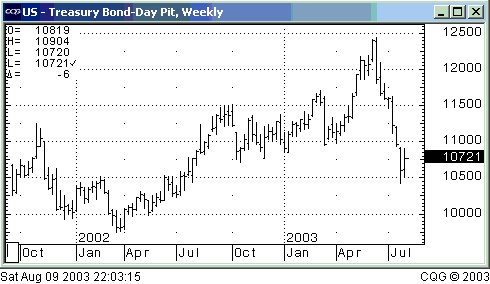Ted Harlan emails about this NYT article about Fannie Mae (and about this discussion of it on the Mises.org blog). The NYT article is quite good in pointing out the extent to which FM is a financial black hole in which business-as-usual has consisted of sweeping interest-rate risk under the rug and hoping for the best. This isn’t news, but the enormous extent of the risk, illuminated in the NYT article by an ex-FM employee, and earlier over a long period by the WSJ’s editorial page, has only recently become a mainstream issue.
Essentially, what Fannie Mae is doing, from a risk standpoint, is not much different from what Long-Term Capital Management did (though FM probably uses less leverage). In both these and numerous other cases following a similar pattern, an institution develops sophisticated mathematical models to exploit apparent relationships between financial instruments. The success of such models tends to depend critically on the accuracy of the underlying statistical assumptions about markets. The people who develop the models think they know what market normality — in both the conventional and statistical senses of the word — means. They are often wrong, though their main error is in designing trading systems that depend too much on the accuracy of these assumptions. In plain language: they are fitting their models to a limited data history without taking adequate account of unlikely events, the financial equivalent of hurricanes. Things go well for a while, maybe for years, much money is made, and then the unexpected happens and the firm loses in a brief period more than it made during its entire history. (Better traders design more accurate models, or design models whose success is not so closely tied to the accuracy of their statistical assumptions about markets, or both.)
The recent huge break in the U.S. government bond market (see chart below) may reflect in part a discounting of the risk that Fannie Mae will default on significant obligations and have to be bailed out by Uncle Sam. (An alternative hypothesis, the possibility that the interest-rate increase represents mainly a return of inflationary expectations, is apparently belied by the fact that the price of gold in U.S. dollars has been stable. How much of the bond market’s fall was due to new economic-growth expectations, how much to the fact that the bull market in bonds was overdone, and how much to Fannie Mae’s problems, is the question. Whatever the answer, the FM situation didn’t help.)
Fannie Mae and other big holders of mortgages and mortgage-backed securities chronically underestimate the odds of a big move in interest rates that could devastate the value of their portfolios, said Nassim Nicholas Taleb, a hedge fund manager and the author of two books about risk and the financial markets. In general, he said, Fannie Mae and other companies rely too much on computer models that do not account for rare but devastating breaks in markets.
“The fact that they have not blown up in the past doesn’t mean that they’re not going to blow up in the future,” said Mr. Taleb, who is also an adjunct professor of mathematics at the Courant Institute of New York University. “The math is bogus.”
Taleb is mainly right. Perfect storms do occur every once in a while. When it happens, finely tuned trading models that are optimized to exploit marginal relationships (and which almost by definition don’t predict extreme outliers) tend to fail catastrophically. Fannie Mae may not fail, but the risk is there and we shouldn’t be complacent about it.

UPDATE: I should have linked to my June 25 post on the bond market (press F11 key if post doesn’t display correctly). I had the market’s direction right but, in hindsight, was excessively concerned about inflation. The fact that interest rates have gone up while gold hasn’t rallied much from the US$350/oz level suggests that inflation is not a significant concern for the markets now.
